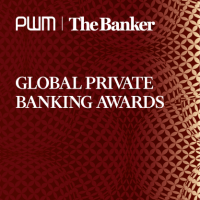Hermes’ thematic strategies strike chord with private banks

ESG strategies were part of the Hermes offering long before they became fashionable, but are now winning them new business in the wealth management sector
Leveraging its institutional experience and heritage of responsible investing, London-based Hermes Investment Management has made significant inroads into the wealth management sector, since starting its push into third party distribution in 2012.
Established as the principal manager of the BT Pension Scheme in 1983, a pioneer in the sustainability space, Hermes today manages $44bn in client assets. Of these, more than 70 per cent are sourced from third party institutions, and are equally split between wealth and institutional channels. Its success in asset gathering shows in PWM’s league table of top 10 asset management brands, selected by our panel of fund selectors. Hermes features in sixth position, up one from 2018, and up 17 positions from two years ago (see p25).
While having a long history of embedding sustainability in investment processes, more recently Hermes has worked hard on evolving its proprietary tools to be able to quantify the positive impact of integrating ESG factors on long-term performance, both from a risk and an opportunity perspective.
But these were new, unusual concepts for the wealth management space until a few years ago, explains Harriet Steel, global head of distribution at Hermes Investment Management. “We are relatively new kids on the block in terms of distributing into the wealth channel. Historically, and up to until recently, the reason we have been able to attract assets has been due solely to performance.”
The bulk of the firm’s assets and revenues lies in equities, including strategies with which the firm first started gaining traction, such as Asia ex-Japan and global emerging markets. More recently, Hermes has raised assets in fixed income, with unconstrained credit a “real winner”.
A rigorous, consistent, repeatable investment process, with ESG integration at its core, appeals to wealth and multi-managers, explains Ms Steel. Firms are increasingly allocating assets in a very institutional way when building portfolios, particularly when they assemble different asset managers, and seek a style-adherent investment process. This is a far cry from a star manager approach. “What our clients like about our strategies is that they do what they say on the tin,” she adds.
Sustainable surge
More recently, there has been a “massive” upsurge and interest in sustainable investing from private banks, wealth and multi-managers, fuelled by client demand.
The firm’s thematic range of strategies has had “huge success” over the past couple of years. Catering to global financial institutions, mainly in the UK and continental Europe, Hermes has developed a strong partnership with UBS, the world’s largest wealth manager. This led to the launch of SDG [sustainable development goal] engagement strategies, both in global equity and, more recently, in global high yield. The sustainable funds now form part of the Swiss bank’s $7bn discretionary managed, sustainable and impact investing multi-asset portfolios.
“We have seen an immense increase in appetite, investments and resources ploughed in by big bank distributors to develop ranges of thematic strategies, to meet client needs,” reports Ms Steel.
The firm’s key strength lies in its stewardship service, offered through Hermes EOS [equity ownership services], founded in 2004. The 30 plus-strong shareholder engagement team, rapidly growing, today has $780bn of assets under stewardship, sourced from asset owners, such as pensions funds and, increasingly, wealth managers.
Assets under stewardship also include all of Hermes’ assets and part of the assets managed by Federated Investors, the US investment management firm with $527bn in AuM, which in 2018 acquired 60 per cent of Hermes from the BT Pension Scheme. The latter retains around 30 per cent of the company, with the remainder belonging to Hermes’ management.
The client advisory board at Hermes EOS determines the core engagement programme offered to external clients annually, assessing three key factors, including materiality of issues, the weight of holdings that clients collectively have with a specific company, and the chance of success of creating positive change. The team focuses on engaging with companies on issues where it has the highest chance of creating positive change.
Hermes is then able to quantify the shareholder team’s qualitative input, which informs its proprietary ESG risk scoring system. “Our shareholder engagement programme gives us a forward-looking, momentum-driven view, which in our experience has worked better at informing future stock or bond prices performance,” explains Ms Steel.



